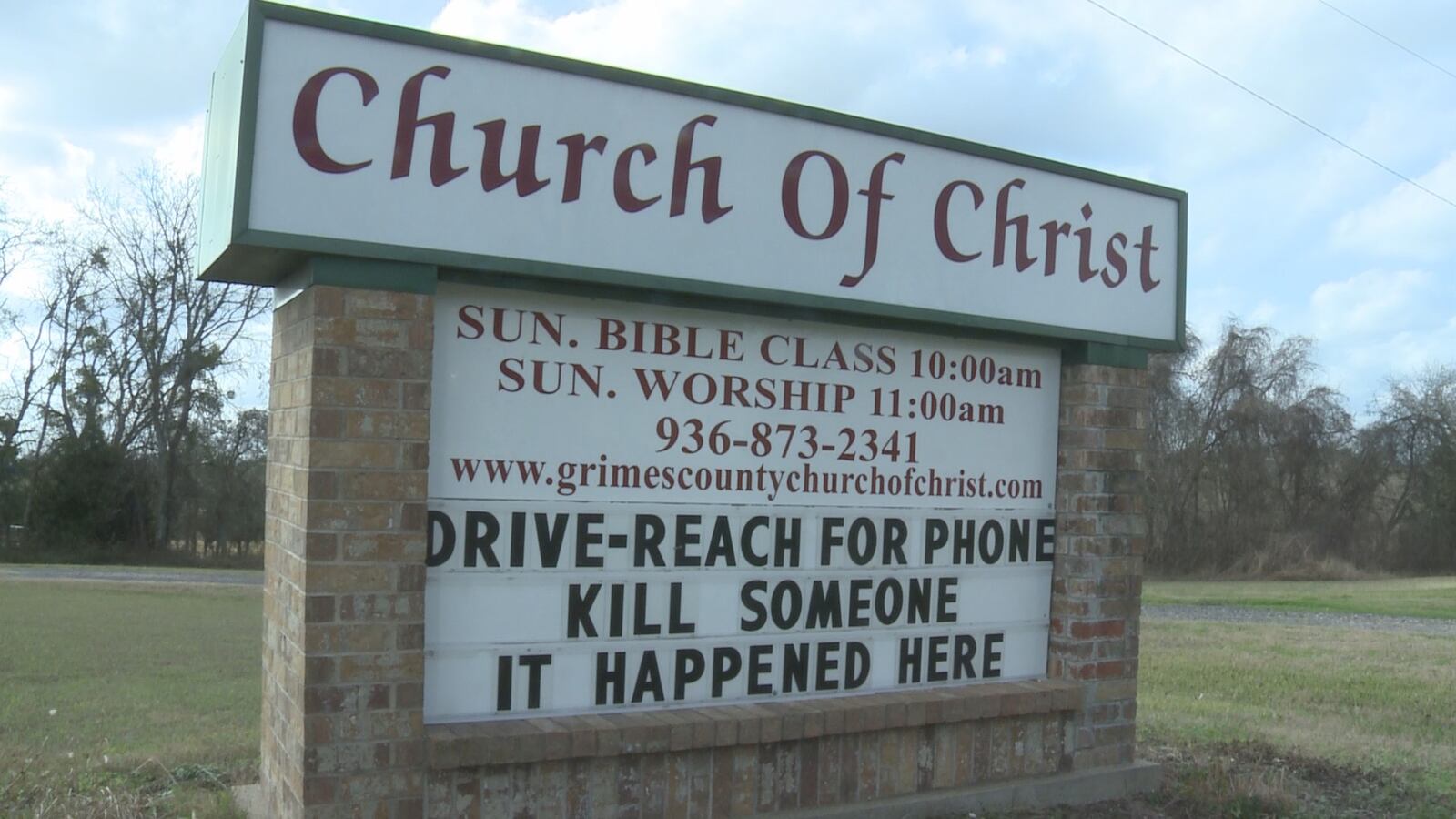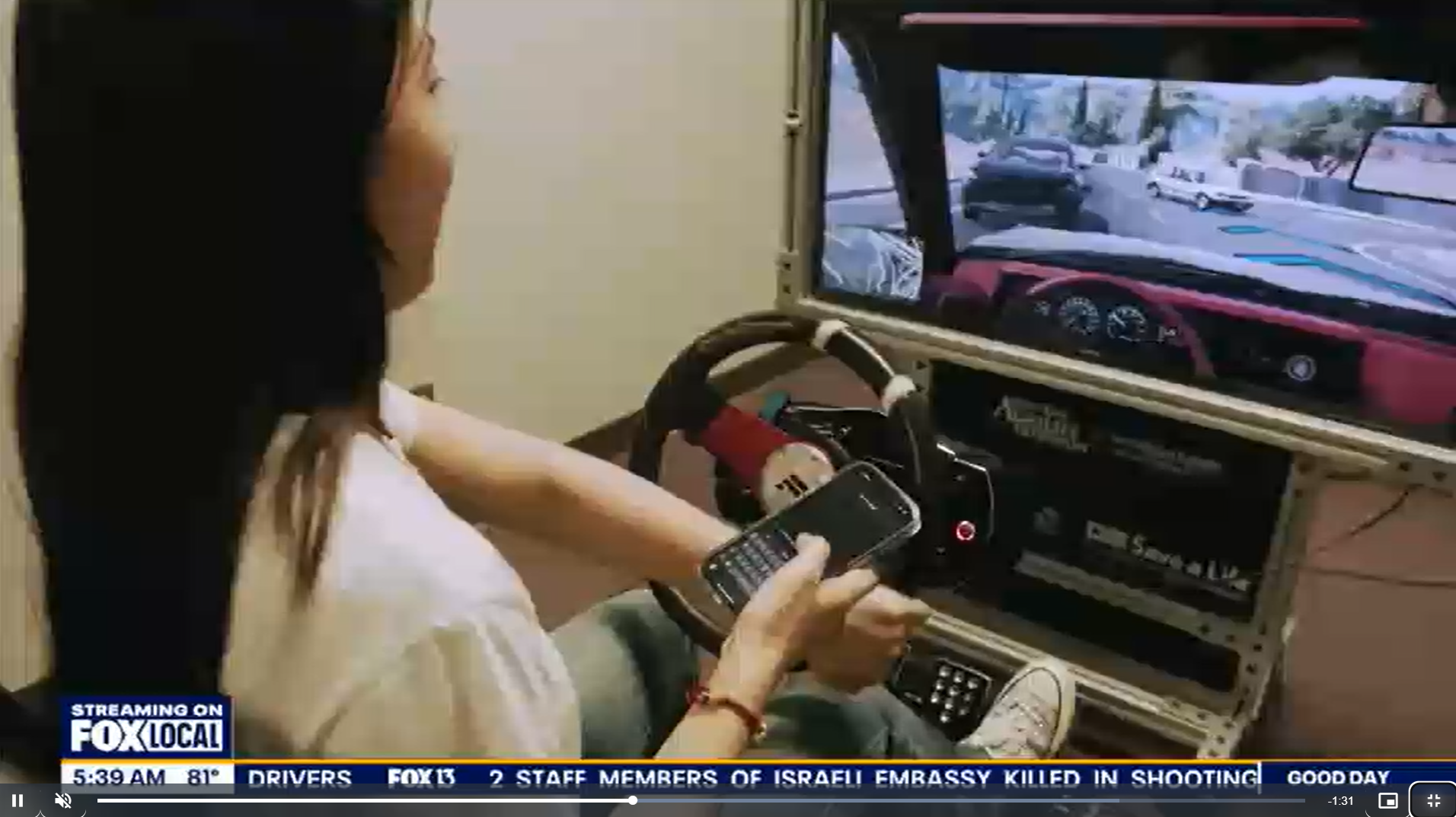
A short period of distraction — whether eating a breakfast sandwich, responding to an incoming text message, or mentally replaying an argument with a spouse — while driving a vehicle can change an individual’s life. In 2020, 13 percent of all motor vehicle crashes in the United States were attributed to distracted driving, resulting in the death of more than 3,700 people.
Distracted driving is becoming all too common, with drivers spending more than 50 percent of their time behind the wheel focused on something other than driving, according to the Centers for Disease Control.
“People have always had distractions both inside and outside the car, but mobile phones have definitely increased the ways in which we are distracted and the amount that we are distracted,” said Dr. Stephanie Payne, a professor in the Department of Psychological and Brain Sciences at Texas A&M University. “As we become more skilled at driving, it becomes a more automated process, and so it is tempting to attempt secondary tasks like texting on our cell phone. Phone notifications call out to us and spark our curiosity, so they can be quite tempting.”
Payne believes that psychology offers a useful lens through which to analyze distracted driving by identifying ways to encourage drivers, especially those who are college-aged, to remain focused on the road.
“Cognitive psychology has pointed out that driving involves visual, cognitive and motor skills, and although we may think we can multitask, we are not good at doing two or more things at once,” she said.
Consequences Of Distractedness
During the past four years, Payne has studied undergraduate students’ ability to drive while distracted using a Texas A&M AgriLife Extension Service driving simulator. Her research is now being published, including a recent paper in the journal Accident Analysis and Prevention coauthored with Texas A&M doctoral students Claire Bowman-Callaway and Benjamin Schulte. That study, which analyzed data from 611 undergraduate students who completed an online task-switching exercise, found that participants who believed they could multitask well were more prone to text while driving. These are the drivers who are hazardous to the public.
“In general, pedestrians are particularly vulnerable to distracted drivers because they seem to come out of nowhere,” Payne said. “So you might think you're safe to glance at your phone, but unfortunately, you are less likely to notice a pedestrian. When a car hits a pedestrian, the outcome is almost always severe.”

Distracted driving also has an economic cost. The Center for Disease Control noted that a non-fatal injury crash at work caused by distracted driving costs the employer $100,310. As a result, companies are increasingly incorporating electronic performance monitoring for employees who drive as part of their job.
Texas A&M doctoral student Fan Yang, who works with Payne, studies distracted driving in the workplace and employees’ perceptions about a supervisor’s use of two approaches: one monitoring distracted driving that evaluates performance, and a second mentoring approach that emphasizes constructive feedback and support.
“In the lab, participants role-played a newly hired delivery driver and were randomly assigned to either a monitoring or a mentoring condition, and a supervisor monitored their driving virtually,” Yang said. “The supervisor would give participants feedback on their driving, including the number of stop lights and signs run, speeding, running off the road, picking up the phone, swerving into other lanes, and the number of navigation errors.”
Preliminary results suggest that employees prefer the mentoring/developmental model.
“We found that participants in the mentoring condition had fewer concerns about privacy, less anticipated turnover intentions, less stress, more perceived organizational support, more perceived fairness, and more anticipated job satisfaction than those in the monitoring condition,” Yang said.
Life is precious. One poor, unsafe decision can have a dramatic impact on many people.
Putting The Brakes On Distraction
Payne and her team are also exploring how to encourage study participants to avoid distracted driving. One way is through simulator scenarios that ask participants to ignore their phone alerts while driving to build a mental habit.
“We are finding that students who come to the lab and drive distracted in our simulator report a statistically significant decrease in their distracted driving,” she said. “Some students report being enlightened by how tempted they are to look at their phone and how poorly they drive when simultaneously texting. Most, if not all, students know texting while driving is a poor decision and unsafe, but they also seem to enjoy participating in our study and reflect a bit on their choice to handle their phone after participating in our study.”
Another promising tactic is a small plexiglass frame attached to the car’s air conditioning vent.
"We want to reinforce the importance of safe driving habits beyond the simulator," Payne said. "So we ask students to submit a photo of someone they care about—someone who wouldn’t want them taking risks behind the wheel. We print it in color and place it in a frame as a tangible reminder when they leave."
One study participant credits the vent frame for being a visual reminder.
“I attach the picture to the air vent right in front of me so that it's the first thing I see when I get in the car,” said Camryn Smith ’27. “My sister is still in high school, so I miss her a lot, and seeing the picture reminds me to continue practicing safe driving habits."
Ultimately, the Texas A&M researchers hope their research will save lives.
“Every day we take calculated risks and new technology presents new hazards,” Payne said. “Life is precious. One poor, unsafe decision can have a dramatic impact on many people.”

